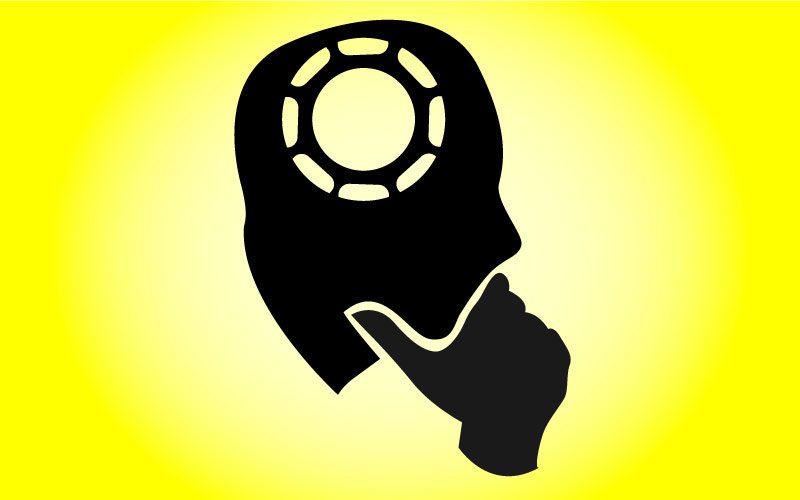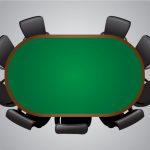Every post in the spoonitnow strategy series has been leading up to this moment. While there is obviously going to be some math involved when it comes to basic things like pot odds, a lot of people are under the impression that things like balance and exploitation require massive amounts of advanced math to do. For most people in most circumstances, however, I don’t believe that this is the case, and that’s why I’ve been building towards this post on a mathless approach to certain aspects of poker like reads, adjustments, exploitation, balance and other similar topics.
Practical Example: River Betting
What we’re looking for here, and the point of this series so far, is to offer you ways to make some pretty effective adjustments without having to do any math or calculations over it. All this requires is that you’re aware of certain segments of your range and certain reads of your opponent. Let’s start with a practical example of betting on the river.
You’re heads-up on the river out of position. The action has been such that you are deciding if you should value bet or check. The first thing that you should consider is, under somewhat normal or average circumstances, what is the worst hand in your range that you would typically value bet. This is your reference point for making your adjustments, and it doesn’t require any real math to think of.
From this point, you take into consideration anything that you think you should adjust to like any reads on your opponent, any second-level thinking, and whatever else. For example, if you just knew that your opponent was loose and passive, then you would probably decide to value bet a little more aggressively. This is the most basic type of adjustment that you’ll be making at microstakes and small stakes most of the time, and while a lot of people think they make adjustments against players like this, there’s no real proof until you can say something like, “I was going to only value bet X hand and higher, but I decided to also value bet Y hand that’s worse than X because he was a loose/passive.”
Manipulating Your Ranges
Some people have complained that the ideas I’ve presented about manipulating your own ranges has been too abstract and difficult to work with at the table without a lot of practice. I think that the main problem is really just how some people think about it, so I’m going to offer an alternative thought process that might help some people to use this information more easily. Let’s use the river betting example above as a model for how we could think about manipulating our own ranges.
Again, we’re on the river, heads-up and out of position, and we have to decide to bet or not. There are usually going to be two types of cases: value betting or bluffing. We’ll normally have a clear idea of which we would be doing. Against a loose/passive opponent, we would typically increase the strength of our range. This would involve bluffing less and value betting more.
A few paragraphs above, we saw the thought process that would lead us to value betting more often. We would start by thinking of the worst hand that we would normally value bet, and then we would decide to value bet a little more often than that. With bluffing, the same kind of thought process applies. We think of the best hand that we would normally bluff with, and we decide to purposefully check with that hand and a few others that are slightly worse.
Where I think a lot of people get caught up is in thinking of their range as a whole. It’s a lot to think about in the moment at the table, and it’s best saved for thinking about during your study and hand analysis. When you’re at the tables playing an actual hand, thinking about just the one particular segment of your range that you’re dealing with (ie: value betting or checking) makes things go a lot smoother.
Where Balance Comes Into Play
Your general, all-purpose, default strategies cannot be formed at the table. They have to be formed away from the table with time put into study and practice. This is where balance comes into play. Balanced strategies are how you would choose to play against an opponent who you knew absolutely nothing about (including how players typically play at these stakes, implications of stack sizes, etc.) Every time you deviate from that strategy, you’re making an adjustment. The goal is to make sure that all of your adjustments are accurate and appropriate.
Manipulating your own ranges by changing their overall strength is an idea that can guide the effects of your overall adjustments, but playing the actual hands is another thing completely. You can’t be expected to think through what your entire range is every single time that you take an action in a hand until you get in a whole lot of practice. Until that point in time comes, it’s better to think about the portion of your range that is relevant to the situation like what we’ve talked about above.
The Limits of the Mathless Approach
The merits of the mathless approach that I have laid out and described are that it gets you used to thinking about the right things during a poker hand instead of trying to play in some robotic way. However, there are also some limits to this approach. The main limit is that to really work out super-balanced play, some math is required. By the time that you get to the point that this information is incredibly useful, however, you’ll understand enough about how the poker side of things work that the math will make a lot more sense. With that having been said, balanced strategies for a lot of basic situations are available just by searching on the forums or on Google, and I’ve personally written out balanced strategies for NLHE river scenarios in multiple threads, as an example.
Submit your review | |









